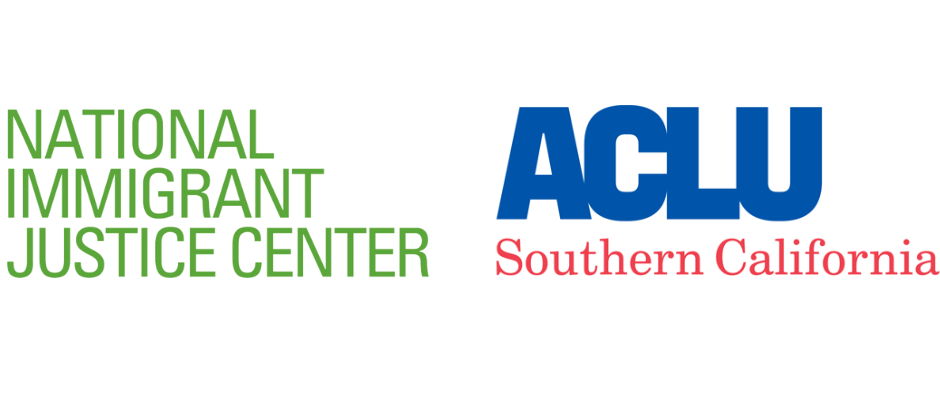When most law enforcement agencies arrest someone, the Fourth Amendment sets guardrails to protect the impacted person’s constitutional right to liberty. Typically, law enforcement must prove to a neutral reviewer, usually a judge, that there is probable cause to keep this person in jail. That is not the case for Immigration and Customs Enforcement (ICE), which has routinely issued forms called “detainers” to local authorities requesting that they keep an individual extra time, so an ICE officer can pick them up. Historically, there has been no neutral oversight of the probable cause for the detainer arrest. A new settlement agreement under Gonzalez v. ICE is set to change this for most of the United States starting in March 2025.
This explainer discusses: (1) ICE’s current process to arrest people in local jails through ICE detainers; (2) what the new settlement will require; and (3) how we anticipate ICE’s detainer practice to change in light of the settlement.
1. What is the current process ICE follows to pick up immigrants from local jails?
ICE issues a detainer to local law enforcement to request that they keep immigrants in jail for up to an additional 48 hours after the local agency’s authority to detain the individual has ended. This detainer request allows ICE to pick the individual up and place them in immigration detention. Many local jails typically oblige—even though it means holding individuals past the release date that has been set by the criminal court, ignoring the bail they posted authorizing their release, and lacking authority to continue holding the individual in custody.
Most ICE detainers are issued against individuals with minimal or no criminal records. By leaning on local authorities, ICE prolongs the time people are incarcerated without foundational Fourth Amendment protections. ICE also disrupts the criminal legal proceedings of these individuals, their access to criminal and immigration defense attorneys, attendance to court hearings, and resolution of their charges.
2. What does the Gonzalez settlement require?
The Gonzalez v. ICE settlement makes significant changes to the practices by which ICE issues thousands of detainers each year. The Pacific Enforcement Response Center (PERC), which is subject to the settlement, issues detainers after business hours (usually 12 hours per day) for individuals in custody in 42 states across the country.* Unless an individual has a prior deportation order or is already in removal proceedings, under the settlement the PERC is now restricted from issuing detainers without undergoing a neutral review process.
Instead, the PERC can only issue a modified form (“Request for Notification of Release”) that requests that local authorities notify ICE if an individual is about to be released. The new form emphasizes that local agencies do not have the authority to keep an individual in custody for ICE’s purposes. The PERC can no longer use detainer forms to ask local law enforcement agencies to keep individuals detained, unless ICE sets up a neutral review process, described in the settlement agreement (Sections III - V), that provides procedural protections comparable to the Fourth Amendment. To date, ICE has not established such a process and setting up the various components of a neutral review process will take time.
3. How will ICE change its detainer practice in light of the Gonzalez settlement?
Beginning on March 4, 2025, ICE’s PERC is only permitted to issue a Requests for Notification of Release, rather than a detainer, and cannot request a person’s continued detention. This means that during the 12 hours per day when ICE relies on PERC, jails in the majority of U.S. states will only receive requests that ask local law enforcement to notify ICE of the person’s pending release but state they are not permitted to hold people for ICE beyond their release date. Importantly, the settlement does not permit ICE to transfer the PERC’s investigation and detainer responsibilities to any other ICE office or location in the country without complying with the settlement and creating a neutral review process.
Additionally, as a result of the Gonzalez settlement, ICE is now also required to amend the language in the detainer form, specifying that local law enforcement must serve individuals in custody with a copy of the detainer form. Failing to do so would invalidate the detainer and provide the person facing extended custody an opportunity to challenge their detention in court.
The Gonzalez lawsuit was brought by the American Civil Liberties Union (ACLU) of Southern California; the National Day Laborer Organizing Network (NDLON); the National Immigrant Justice Center (NIJC); and McLane, Bernarski & Litt LLP. More guidance is forthcoming on this settlement. For more information, please contact: litigation@immigrantjustice.org or GonzalezSettlement@aclusocal.org.
*The settlement also covers portions of 2 other states, the District of Columbia, and a number of U.S. territories.

